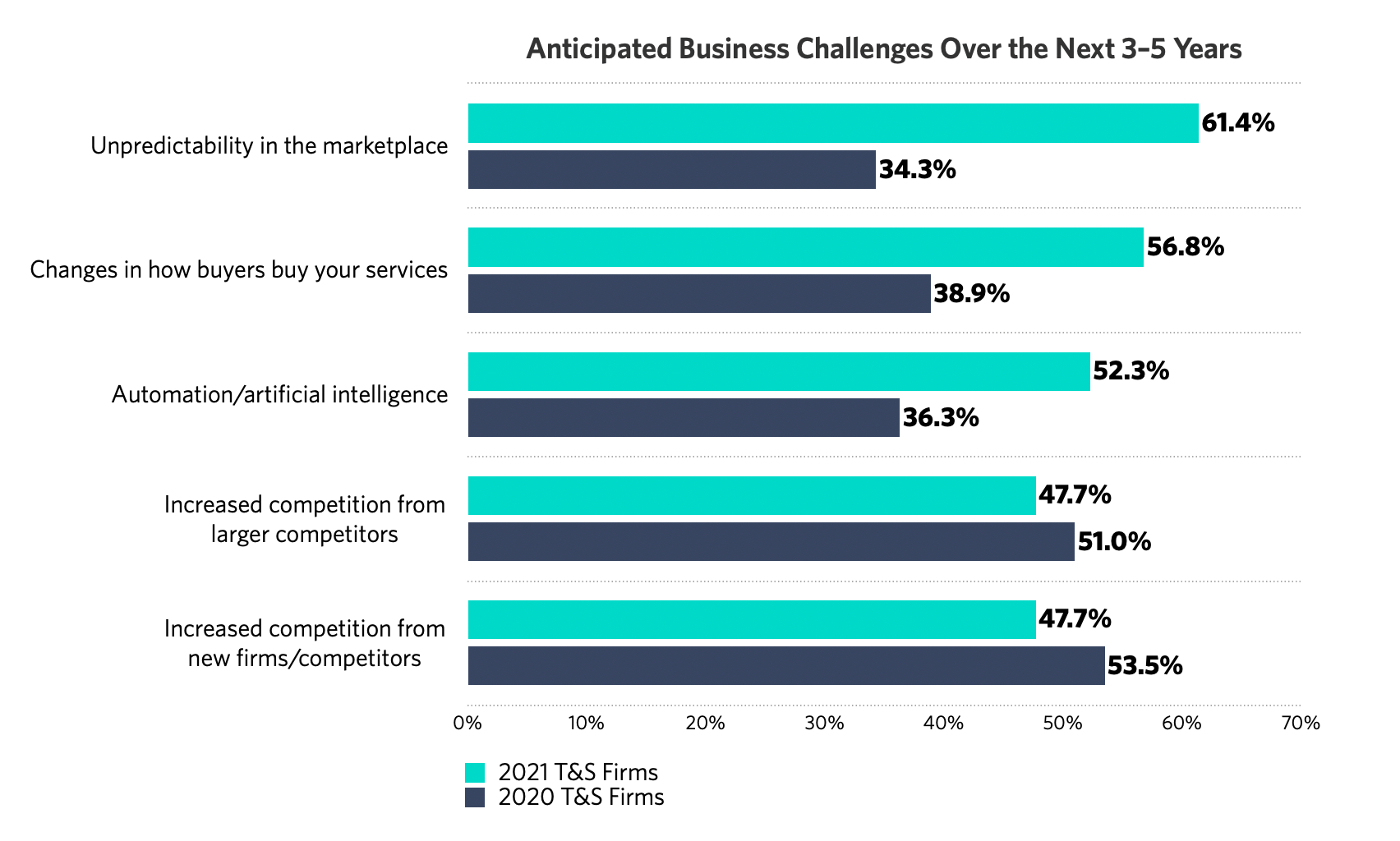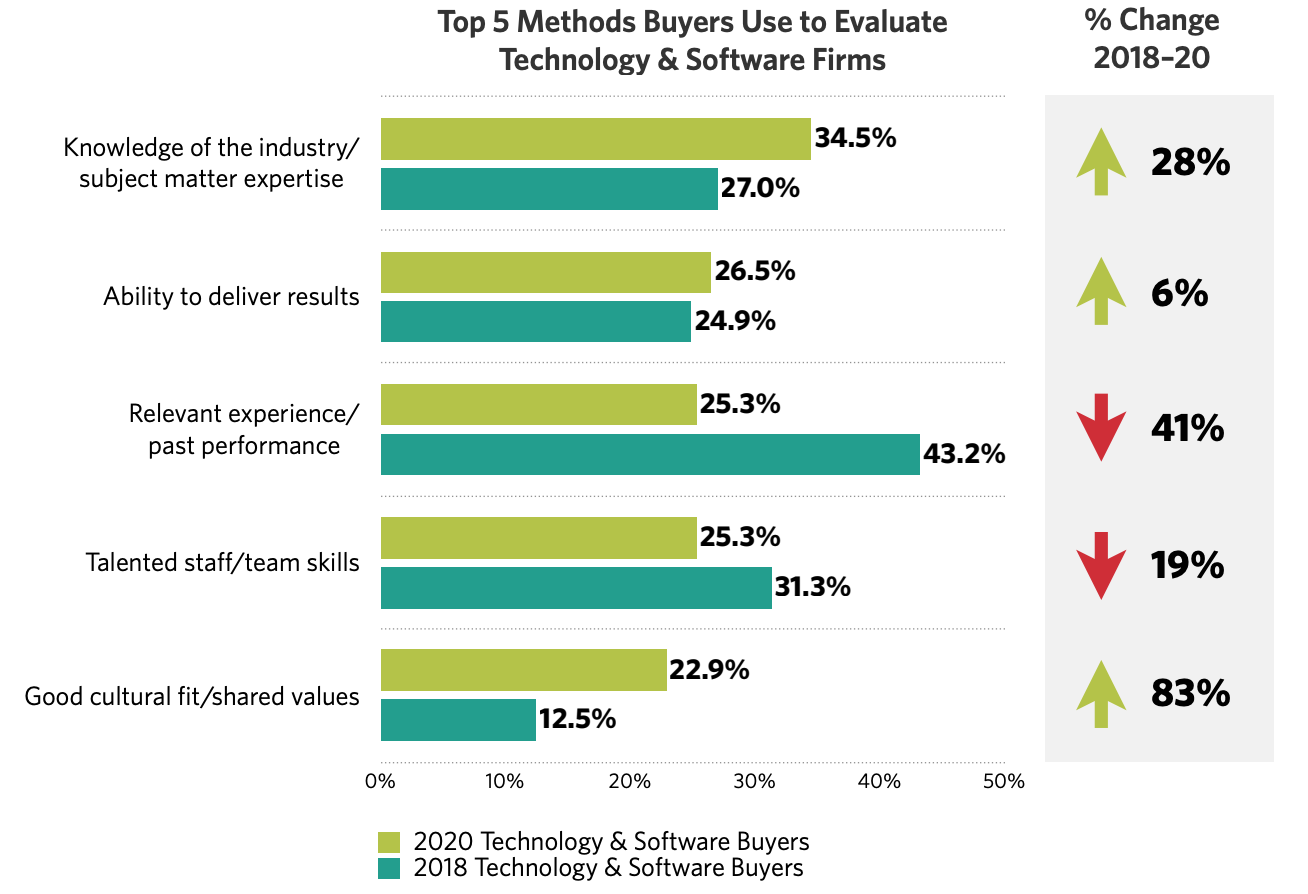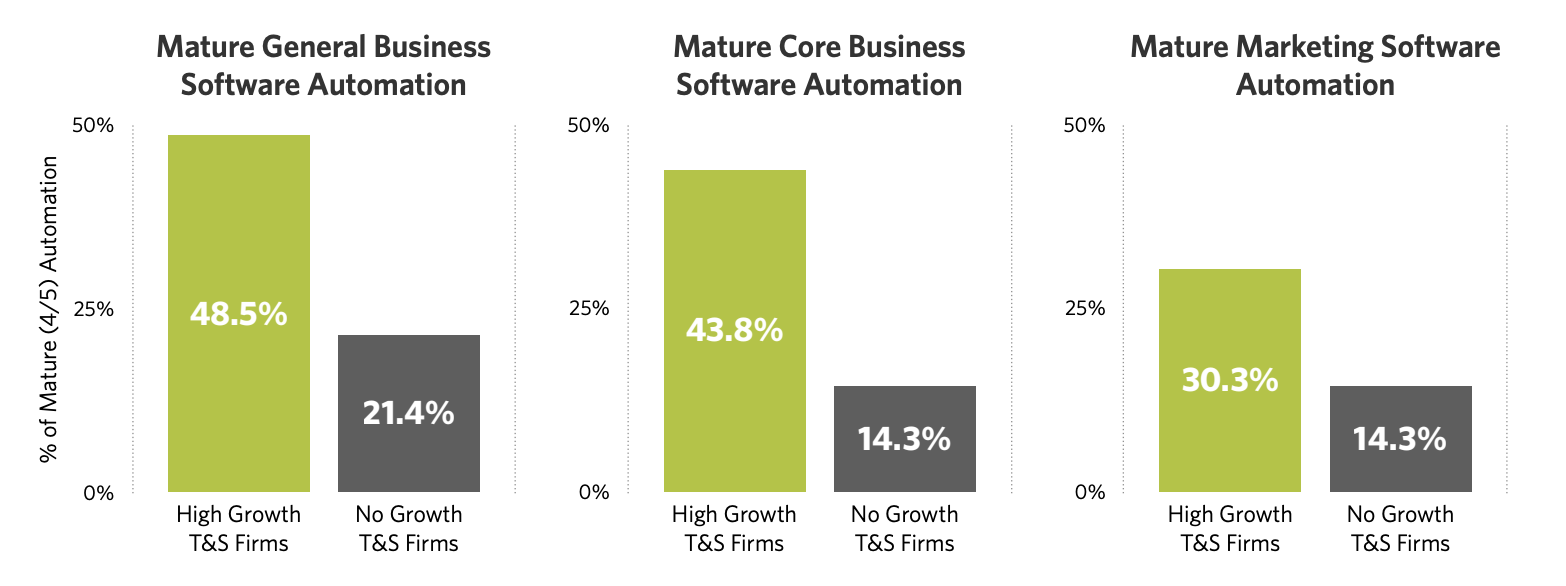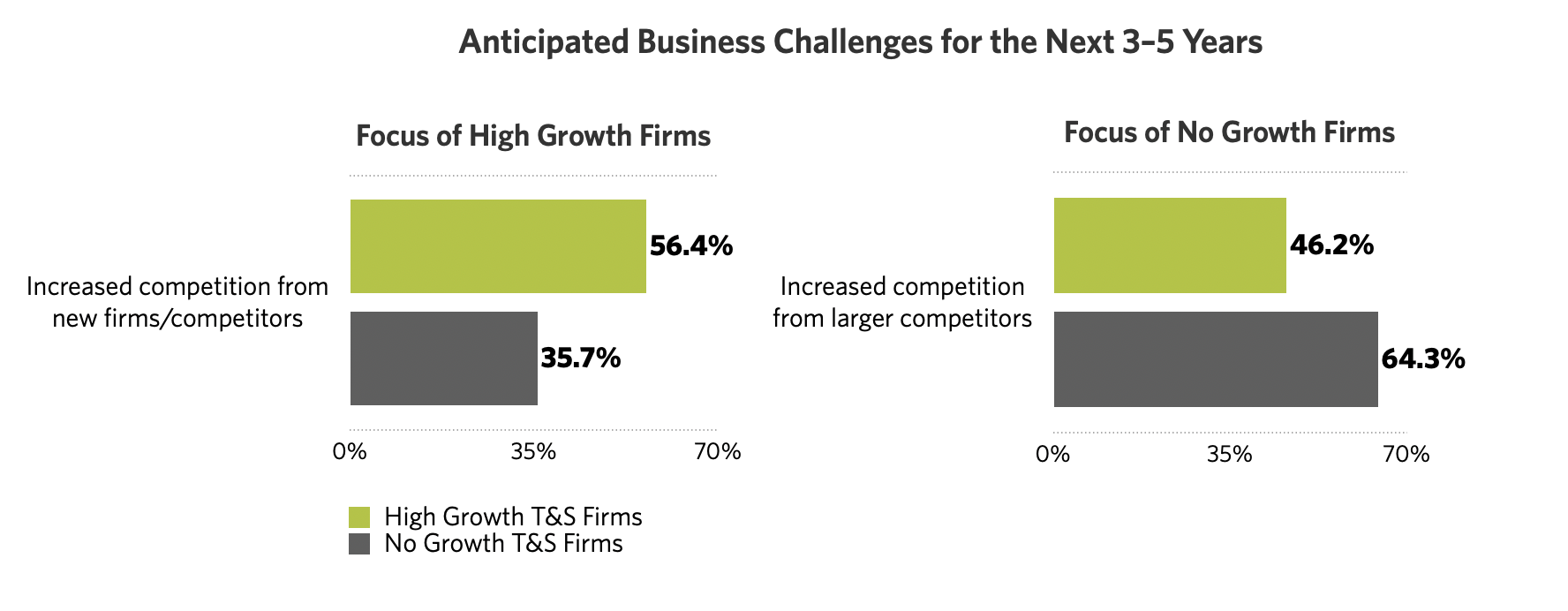In the fast-moving world of technology and software, new trends are always emerging and vanishing—and firms are challenged to figure which ones to address vs. which ones to leave behind. The year 2020 was unique though… Not only did the COVID-19 global pandemic disrupt the business landscape around the world, it also accelerated the world’s adoption of digital solutions.
Threats and opportunities abound.
As part of the Hinge Research Institute’s ongoing High Growth Study, over 120 business leaders and marketers from technology and software firms, representing $175 billion in combined revenue, were surveyed about their top business challenges and marketing priorities for 2021.
While there are many opportunities in the marketplace, this article will focus on the top five business challenges of technology and software companies. The results are intended to offer insight into the best approaches for driving success in the coming year.
The Top Five Anticipated Business Challenges of Technology and Software Firms
For technology and software firms seeking to stay competitive and grow during these demanding times, having a research-based understanding of how your peers and competitors view the marketplace is essential. So what are these top anticipated business challenges? In Figure 1, we see that the top challenges are quite different this year than in 2020.

Figure 1: Top Anticipated Business Challenges of Technology & Software Firms in 2021
The top three challenges of 2021 each saw an increase of at least 44% while the final two, which tied for fourth place, came down from their 1st and 2nd place positions in last year’s study.
Let’s unpack these top anticipated business challenges from the 2021 High Growth Study: Technology & Software Edition one-by-one.
1) Unpredictability in the Marketplace
Across professional services industries, we saw a common theme when it came to the top anticipated business challenge of 2021—unpredictability in the marketplace. Yet the result here for the technology and software firms stands out still. Of all the other professional services industries surveyed, no other industry had such a high consensus on their number one issue.
With a staggering 80% increase since 2020, respondents clearly experienced the widespread changes introduced by the COVID-19 pandemic. Moreover, rumblings of public policy and regulatory changes loom large in the minds of business leaders and marketers in the tech space.
To adequately battle the rising unpredictability in the marketplace, it’s more important than ever that firms understand their clients. When competing for business opportunities, it’s important for firms to differentiate yourself—to find ways of setting yourself apart culturally or technologically. As with innovation, finding top differentiators takes research and deep insight into how your firm stands out from others. Firms must talk to their clients, employees, and partners in order to find out what has set them apart in their collaborators’ eyes, and what hasn’t.
2) Changes in How Buyers Buy Your Services
Following uncertainty in the marketplace is how 56.8% of technology and software firms identified the ways buyers go about buying services as a top challenge. Here again we see a sharp increase from the previous year’s study as this category was not even in the top five challenges of 2020.
Most firms understand that more and more buyers turn to digital channels to find solutions for their work-related business problems. In fact, this sentiment is backed up by another Hinge Research Institute study Inside the Buyer’s Brain where it was found that turning to search engines was the number one method used by technology buyers. Yet, how many firms have continued to neglect improvements to their websites, SEO, and content marketing strategies? Quite a few.
In Figure 2, we see the top methods technology and software buyers use to evaluate different service providers. Notice how the number one method used to evaluate a service provider is by examining their industry knowledge and expertise. When buyers search for issues that you help solve, will your firm be found? Does your website include a resource hub that demonstrates your specific expertise? And finally, are your firm’s experts active in showcasing their knowledge at industry specific conferences, virtual events, or podcasts? Are they actively using social media?
To keep up with the increasingly competitive marketplace, your firm needs to be found where your buyers are looking. Again, research on your clients and competitors can guide you on how buyers are changing today.

Figure 2: Top 5 Methods Buyers Use to Evaluate Technology & Software Firms
3) Automation and Artificial Intelligence
Also leaping into the top five anticipated business challenges for the first time, and mentioned by 52.3% of technology and software firms, are the emerging technologies behind automation and artificial intelligence (AI). This challenge is not unique to the tech industry. In fact, automation and AI was the third highest anticipated business challenge ranked by firms across the professional services spectrum.
We found across our High Growth Study that technology which allows firms to automate aspects of their core business or marketing and sales initiatives stood out as a telling example of where high growth firms hold a competitive advantage over their slower growing peers. Diving deeper into the 2021 High Growth Study: Technology and Software Edition, we see below in Figure 3 that high growth firms are more likely to use automation in a more sophisticated way.

Figure 3: High Growth vs. No Growth Firms with Automation Maturity
The innovative products that give high growth firms this competitive advantage are developed right here in the technology and software industry. But for some firms, there is still a large mountain to climb in terms of maturing their adoption of these technologies.
4 & 5) Increased Competition from Larger Competitors and New Competitors
The technology and software space is one of the fastest changing industries in all of professional services—seeing a constant influx of new competitors entering the marketplace or large competitors branching into new service areas. In this year’s study, there was a tie for fourth place with 47.7% of respondents selecting both increased competition from larger competitors and increased competition from new competitors. These two challenges were the top two challenges from the 2020 High Growth Study: Technology and Software Edition.
When we segment these respondents into high growth firms and no growth firms (see Figure 4) there is an interesting distinction with high growth firms being more concerned with new competitors (56.4%) while no growth firms perceive larger competitors as a challenge (64.3%).

Figure 4: Increased competition from new and larger competitors distinction
Both of these challenges remaining in the top five year-over-year speaks to the hyper-competitive nature of the industry. New competitors can often be a threat due to some proprietary technology while larger firms who already operate at scale have an increased ability to outspend and outmaneuver their smaller competitors. Mergers and acquisitions (M&A) also play an important role in the marketplace with over 50% of high growth firms seeing a portion of revenue come from M&A activity.
Couple these challenges with more data from our Inside the Buyer’s Brain study, that technology and software buyers are 44% less loyal to their current services providers than in 2018, and you have a recipe for exceptional business stress.
For many firms there is pressure to increase their investment into their marketing. But increased investment alone isn’t the path to growth. With so many competitors swirling around the same buyers, technology and software firms must differentiate themselves and have the marketing automation tools that help them rapidly connect with prospects to close more deals.
Conclusion
Saying that the technology and software marketplace is competitive is more than an understatement. The top anticipated challenges of 2021 speak to a marketplace that is unpredictable and flooded with competition. More than ever firms need to concentrate their efforts on a strategic marketing strategy that includes top-to-bottom analysis of their clients and prospective buyers. Such research can guide firms as they increase their marketing investments and refine their positioning in the marketplace.
How Hinge Can Help
Technology and software firms of all sizes face the unpredictable challenges of the modern marketplace. Hinge’s Visible Firm Program leverages the power of target client research to lift the veil of uncertainty around their clients and buyers. If your firm is looking to build a research-based marketing plan then click here to learn more about this program.
Additional Resources
Want to see the full results of this research? Purchase the 2021 High Growth Study: Technology & Software Edition




